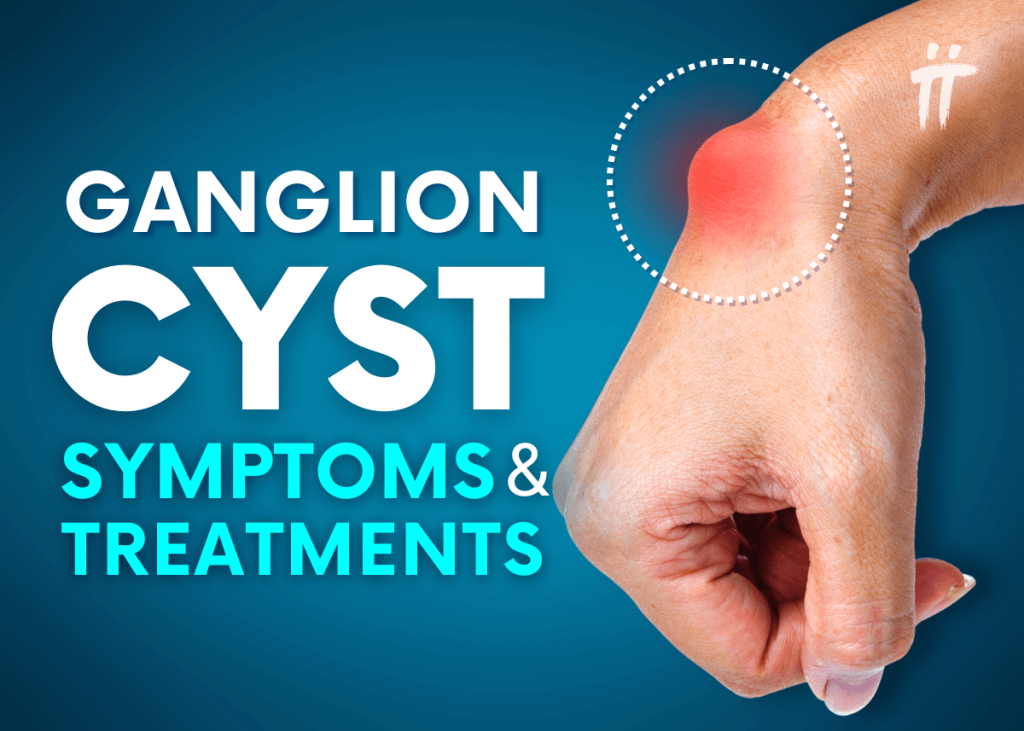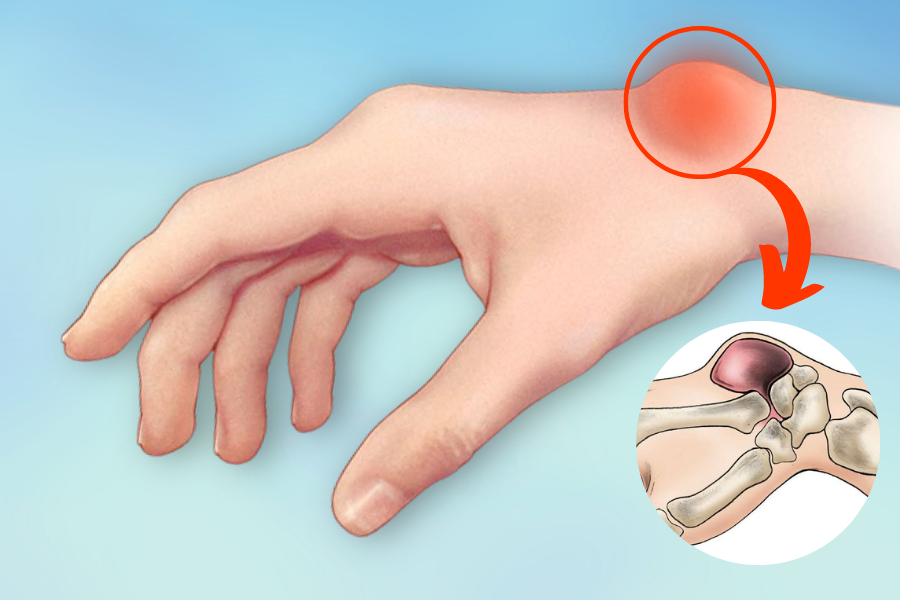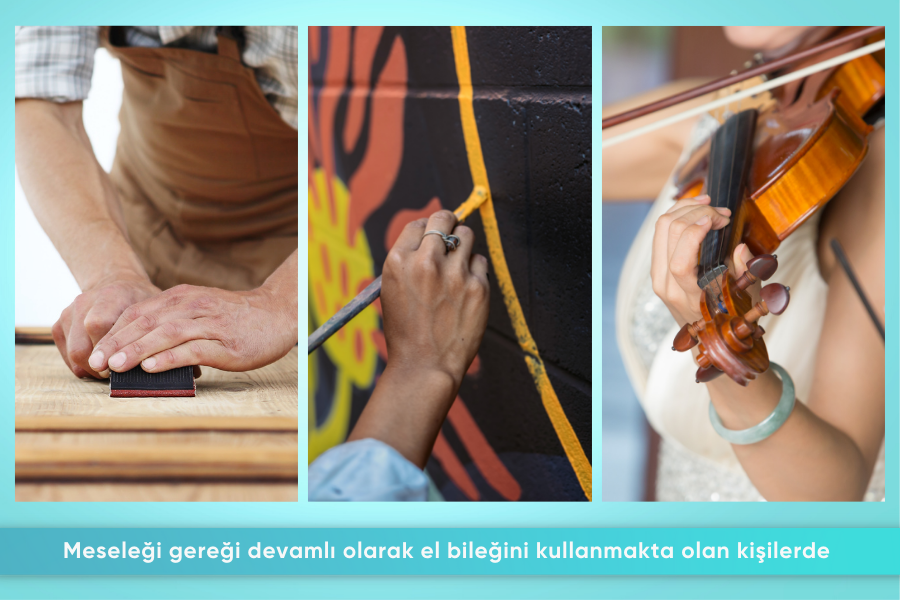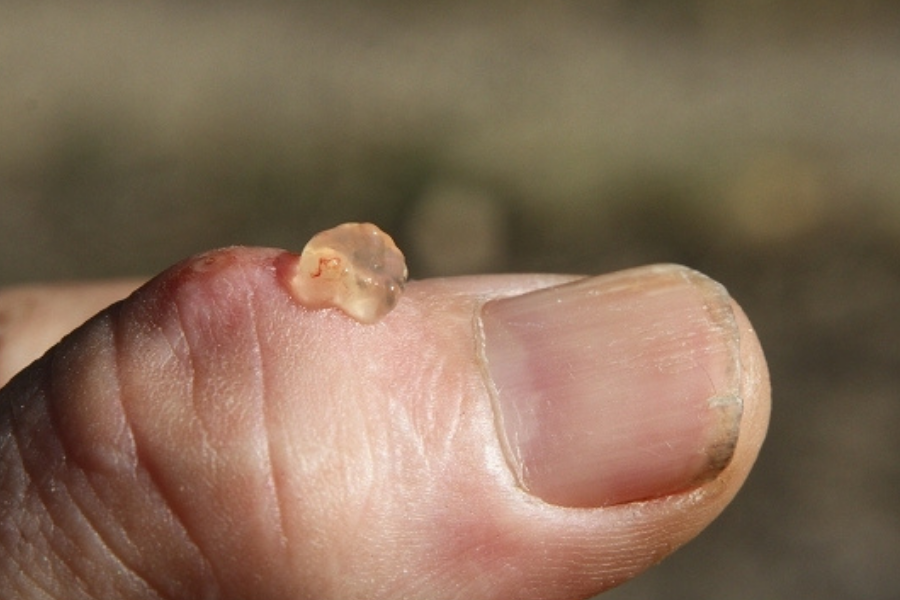
Ganglion cyst is a mass of fluid tissue that forms over a joint or tendon. This mass in the form of a viscous, transparent and gelatinous liquid is not a tumor. Most of the time there are no symptoms other than a visible or palpable lump. Approximately 50% of ganglion cysts, especially in the wrist and ankle, resolve on their own over time. However, cysts that do not go away or cause pain may need to be treated by an Orthopedic Specialist. What is a ganglion cyst? What causes a wrist cyst? You can find information about the symptoms and treatment methods in the rest of our article.
Contents:
- What is a Ganglion Cyst?
- What are the Symptoms of Ganglion Cyst?
- What are the Risk Factors for Wirst and Ankle Cysts?
- How is Ganglion Cyst Diagnosed?
- How Does a Ganglion Cyst Pass?
- Ganglion Cyst Treatment
- Ganglion Cyst Surgery
- What is Arthroscopic (Closed / Cosmetic) Ganglion Cyst Surgery?
Frequently Asked Questions About Ganglion Cyst
- Which Department Treats Ganglion Cyst?
- How Many Hours Does Hand Cyst Surgery Take?
- What to Expect After Ganglion Cyst Surgery?
- Are There Scars After Hand-Ankle Cyst Surgery?
- Does Ganglion Cyst Recur After Surgery?
What is a Ganglion Cyst?
A ganglion cyst is a hard or soft mass arising from a joint or tendon sheath. The sac-shaped mass contains a thick, viscous, viscous and gelatinous fluid. When it reaches a certain size, it can be felt by hand and visible to the eye. It can also grow and shrink depending on joint or tendon movement.
A ganglion cyst is not a tumor. It is a fluid-filled cyst that often occurs with exertion and increases in size with strenuous activities.

What are the Symptoms of Ganglion Cyst?
Ganglion cysts can occur in any part of our musculoskeletal system where there are tendons and joints. For example; shoulder joint, elbow joint, hip and knee joint, hand and ankle joint. However, it is most common in the hand and wrist area. It develops more especially in the dorsal, upper part of the wrist. Subcutaneously palpable ganglion cysts may be smoothly circumscribed, hard, slightly soft, painful or painless (Picture 2). Ganglion cysts, which are also seen between the finger joints, can form hard and painful masses.

When the ganglion cyst reaches a certain size, it can cause pain in this area by pressing on the surrounding tissues. In addition, it can cause pain in neighboring areas by compressing the surrounding tissue.
For example, while a ganglion cyst in the knee does not cause a palpable swelling, it may cause symptoms such as numbness, burning and tingling in the outer part of the leg depending on the nerve it compresses. Also, since it is a mass, it is important to make a differential diagnosis of different conditions. It should therefore be evaluated by an Orthopedic Specialist.
What are the Risk Factors for Wrist Cysts?
There are no factors that directly influence the formation of hand and ankle cysts. However, some people are more likely to develop it.
- Gender and age: Ganglion cysts are seen in all age groups. However, it is more common in women than in men. It is also more common in the adult age group of 20-50 years. Ganglion cysts are more common in people who engage in sports or occupational activities that strain the joints and tendons.
- Arthritis (osteoarthritis): People with osteoarthritis in the joints of the hands and feet are more likely to have ganglion cysts.
- Joint or tendon injury: It is more likely to develop in damaged joints or tendons after a joint or tendon injury.
- Occupation: People who constantly use their wrists due to their occupation may also develop ganglion cysts due to strain (Picture 3).

How is Ganglion Cyst Diagnosed?
Patients with a palpable mass under the skin near the joints should consult the Orthopedics Department. On examination, the ganglion cyst is usually a firm, well-demarcated mass that is not adherent to the surrounding tissue and can move under the skin. However, it can sometimes be seen as a softer and movable mass with smooth borders.
Ganglion cysts can be visible or palpable as mentioned above. However, it may sometimes be seen incidentally in patients with other findings in whom imaging is requested.
Ganglion cyst is diagnosed by physical examination. Since it is a soft tissue mass, X-rays to visualize bone tissue are not necessary. Magnetic resonance imaging (MRI) may be necessary to clarify the diagnosis or for differential diagnosis in patients with suspected tumors. Ultrasound is used to determine whether the mass is a vascular structure or to evaluate the fluid inside.
How Does a Ganglion Cyst Pass?
If a ganglion cyst is diagnosed in a patient who has a cyst in the wrist or ankle but does not complain of pain, burning or tingling, he/she should be aware that it is a benign mass and is likely to resolve spontaneously. If you have no complaints and it does not bother you visually, there is no need for any treatment.
Although the name cyst brings to mind a tumor, a ganglion cyst is not a tumor. But it is an Orthopedic Specialist who will also tell you that the cyst is not a tumor. In the treatment of ganglion cysts; non-surgical treatment methods or surgical treatment options are used.
Ganglion Cyst Treatment
Non-surgical treatment options are applied in hand and ankle cysts that cause pain from time to time. However, in cysts that do not cause any complaints, follow-up is also part of the treatment.

Immobilization: Strain and activity of the wrist and ankle cause pain and enlargement of the ganglion cyst. In the treatment of ganglion cysts, immobilization of the affected joint with a support or splint for a certain period of time can shrink the cyst and reduce pain. Local painkillers such as pain pills or ointment/cream/gel can also be used temporarily.


ATTENTION! Traditional methods of treating ganglion cysts, such as hitting the cyst with a hard book to burst it or wrapping it with a coin, were used in the absence of modern medicine. These methods should not be recommended because of the damage they can cause.
A hand and ankle cyst is ultimately a mass and the treatment is not to burst the cyst, but to remove it completely from the joint or tendon from which it originates.
Aspiration: One of the most common non-surgical treatment methods used in the treatment of ganglion cysts is needle aspiration of the cyst under ultrasound guidance, i.e. aspiration of the fluid inside the cyst with a needle. Aspiration is commonly performed especially in easy-to-reach areas and in areas without vascular-nerve neighborhood. Although it is not a wrong treatment method, it is a method with a high chance of recurrence.
Ganglion Cyst Surgery
Ganglion cyst surgery is the surgical removal of the cyst completely from the joint or tendon to which it is attached. Most of the time, the surgery is performed openly, that is, the skin and soft tissue above the cyst is cut and the cyst is removed.
The mass removed after surgery can be sent to pathology if it is suspicious. This depends entirely on the surgeon’s preference and routine practice.

What is Arthroscopic (Closed / Cosmetic) Ganglion Cyst Surgery?
Arthroscopy is a combination of the words arthro (joint) and scopy (organ imaging in medicine). The general definition is visualization of the inside of the joint by making a small incision in the skin that is small enough for a surgical instrument (Picture 7).
Arthroscopic surgeries have developed day by day in the field of orthopedics over the last 50 years, leading to a decrease in the number of open surgical interventions. For example, arthroscopic meniscal repair is now the standard treatment for meniscal tears.
The main reason for the popularity and widespread use of arthroscopic procedures is that the joint is visualized much better with special optics than open surgery by entering the joint through small skin incisions, and the procedures are performed much more easily than open surgery with small incisions and special hand tools. In addition, postoperative recovery is much faster than open surgery.

Ganglion cysts are usually found in female patients and in the upper part of the wrist. Arthroscopic ganglion excision surgery can be an alternative to open surgery because it is a closed surgical method from a cosmetic point of view. In addition, arthroscopic, i.e. closed, excision of hand and ankle cysts can provide earlier functional recovery as the incisions will be smaller. This disease, which is especially common in women, is cosmetically more advantageous as the postoperative scar is less.
Frequently Asked Questions About Ganglion Cyst
Which Department Treats Ganglion Cyst?
Ganglion cysts constitute 60-70% of the soft tissue masses in the hand and wrist. So, which part of the hand looks at the common ganglion cyst? This question is a very curious topic.
A ganglion is a mass arising from the joint or tendon sheath.
And it is commonly seen in the hand and foot area! Therefore, ganlion cysts are a joint problem and orthopedics and traumatology doctors should be consulted for the correct diagnosis and treatment of the cyst.
How Many Hours Does Wrist Cyst Surgery Take?
Ganglion cyst surgery may vary depending on the anatomical region where the cyst is located. While the surgeries of easy-to-reach areas are short-term, ganglion cysts that are close to important anatomical structures such as vessels and nerves may take a little longer.
Considering other factors that change the duration of surgery (duration of anesthesia, awakening time, etc.), it is difficult to say a clear duration of surgery. But usually the total time from entering to leaving the operating room is 1 – 1.5 hours in total.
What to Expect After Ganglion Cyst Surgery?
After ganglion cyst surgery, the hand and ankle should be placed in a resting position with a bandage for a while. This will reduce the patient’s pain and postoperative edema. In general, the stitch removal period is 14-15 days for the hand and foot, and the stitches are removed under the control of the doctor according to the wound healing.
It is important for wound care that the wound is not touched with water or left in water for a long time until the stitches are removed. Dressing changes should also be done 2 to 3 times a week under sterile conditions.
Are There Scars After Wrist Cyst Surgery?
Scarring in the suture area after surgery is a natural result. The scar can be a small line or dark and raised from the skin. Of course, the most important condition that determines the scarring after surgery is the size of the incision in the skin. Since arthroscopic surgery is performed through two small skin incisions, it leaves an unnoticeable scar.
Does Ganglion Cyst Recur After Surgery?
Ganglion cysts can recur if they are not completely removed, as in the case of needle extraction.
In hand and ankle surgery, the cyst must be separated from the surrounding tissues (vessels, tendons, etc.) and removed from the joint capsule or tendon to which it is attached.
It should not be forgotten that even if it is completely removed, there is a possibility of ganglion cyst formation in the same area again. However, after surgeries in which the cyst is removed as a whole without bursting with the appropriate technique, the possibility of recurrence is very low.
If you have one of the symptoms of hand and ankle cysts, you can contact us for information about diagnosis and treatment methods. You can also share your questions with us on our social media accounts.









Leave a Comment